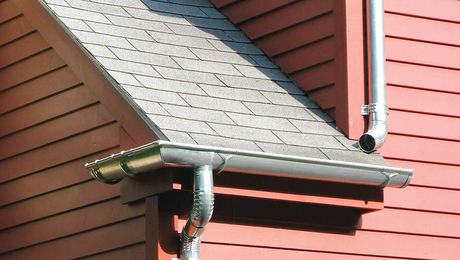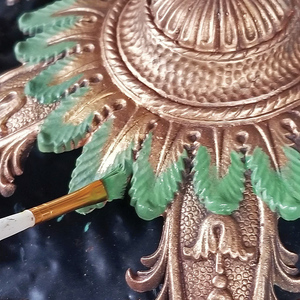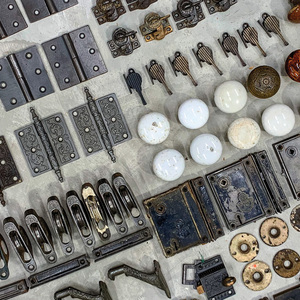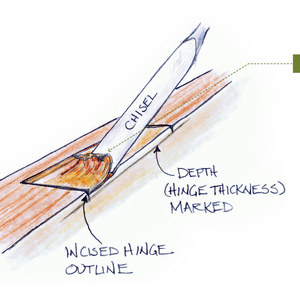A lot of remodling goes on where I live, and I’m looking to salvage some old hardwood flooring for a new house I’m building for my family. My question is whether the varnishes,lacquers, etc. commonly used to finish floors over the years contained heavy metals or other elements I should be concerned about. For instance, was lead ever used as a drier in clear finishes? I’ve also heard that some furniture finishes used to contain arsenic in order to thwart mold and other organisms.
When it comes time to sand the floors, the old finish will be converted to fine dust and spread all over the house, and I certainly want to avoid introducing something harmful into my new house just before we move in.
Thanks for the help.



















Replies
Assuming you'll be hiring a sanding contractor....the machines they use pick "most" of the dust up, but not all.
I would simply put drop cloths over the door ways they are working in or better yet, old "wet" sheets which will attract the dust and stick to the sheets.
Windows open and fans.
Personally I wouldn't worry about it. What you will be having done is what everyone has done when floors are sanded/refinished.
The poisons in the plywood and wall to wall carpets etc etc that are through out your house give off enough vapors to keep you worrying if you want.
Be well
andy
True compassion arises out of the plane of consciousness where I "am" you.
http://CLIFFORDRENOVATIONS.COM
In paint, the big concern is lead. Since 1978 all residential paint has been lead-safe (although commercial and industrial paint can still have lead). The biggest problem is with dust from friction surfaces (double-hang windows, etc) getting ingested by toddlers as they crawl around on the floor.
Almost no laquers or varnishes had any lead. They added some lead compounds for just a few years expecting it to age better but it didn't. So during a lead-based-paint inspection, one might do a couple of shots of the clear finishes but a positive result would very surprising (and more likely a pipe in the wall or Mexican plates in the cabinet).
If you are worried about a clear finish or a painted surface that you are proposing to sand, I can test it. I'll email you my address. I'm in the field this month doing hazard assessments and have therefore rented an X-ray fluorescense analyzer. (They're cool but cost $12,000 to $30,000).
And if there is lead in the finish, then you are right to concerned. Sanding the stuff can give you a case of acute lead poisoning. Doing anything other than unprotected dry sanding (wet sand, heat and scrap, remove whole, use a air-purifying respirator with HEPA filter) eliminates most of the exposure.
Hey David,
Can that thing test water too? I have a reallyyyyyyy old well out back and would love to test the water.
From what I hear the most acceptable water tests costs thousands.
Be well (freudian slip?)
andyTrue compassion arises out of the plane of consciousness where I "am" you.
http://CLIFFORDRENOVATIONS.COM
My instrument can't test water at the levels you care about. A water test for lead ought to be about $20. Ask the health department for a list of labs in your area (and maybe who is friendliest to homeowners - I usually send 20 to 50 samples at a time for 2 to 6 analyses each. That costs $1000's!).
Here's the protocol, if you want to be thorough:
Don't use the water for 6 hours.
Collect the first 250 ml (one cup) to assess lead in the kitchen faucet's brass.
Collect the third 250 ml (third cup) to assess lead in the household plumbing.
Run it till it is cold and collect one for the service line.
Run longer a few minutes (calc it if you know the distance) to check the source (well or city water main).
I do all four, because I don't want to go back and do it again. But if the first sample is okay than everything is okay - faucet, household pipes, service piping and source.
David Thomas Overlooking Cook Inlet in Kenai, Alaska
Don't forget the free disclaimers to go with the free testing advice.
;).
Excellence is its own reward!
David-
An issue I had with the state licensed lead inspector who worked at my house: his x-ray flouresence analyzer only gave a positive for lead reading if the lead content in the paint was over 5,000 ppm. I had some door paint that tested at 1100 - 1300 ppm, when I sent it to a lab. I had removed a small section of this paint with a heat gun and let it get all over the wood floor. After sweeping up the chips, I got 39 - 80 micrograms of lead dust per square foot. His machine gave a negative report for lead paint on the door. His explanation for this was that he was only required to report lead paint that was at "action level" as determined by the state, which is over 5,000 ppm. This doesn't seem right to me. Can you shed some light on this issue?
A lead-based paint (LBP) inspector is pretty simple kind of guy, at times. Point, shoot, record, move on. The machine tells you how much, if it passed, and records the data as well. Below the treshold, in a LBP inspection, a low amount of lead is non-event.
That does not mean it is not a hazard. Dry sanding would be a bad idea. If the paint is not intact or is on a friction surface, it could be generating lead-containing dust. (Peak exposure to lead dust is at age 2 - out of mom's arms and the crib; crawling around a lot, hands on the floor and hands (and everythig else) constantly in the mouth. Plus their brain are trying to connect the neurons at that age and lead interferes with that neural development.
Perhaps what you were hoping for was a "lead hazard assessment" which would not just look at positive/negative "is it above the threshold for LBP?". Rather, it would look at all the lead hazards (piping, fixtures, outside soil, etc). And be done by someone with a little more training - 3 days of LBP inspector training PLUS 2 days of assessment training plus a higher level of education/experience to sit for the test.David Thomas Overlooking Cook Inlet in Kenai, Alaska
This is what I meant about disclaimers. I knew you could get "false negative" reports. Now I've got an idea why. Thanks..
Excellence is its own reward!
On a related subject, this lead inspector I hired told me he does a lot of testing for HUD houses. Apparently, the a-hole landlords go in to an apartment right before he gets there and cleans the hell out of it. They especially clean all the window sills of the old windows with the peeling paint on them. Then they make sure no one opens or closes the windows before the inspector arrives. The inspector takes dust wipe samples in the window wells and elsewhere, the place passes and HUD is happy. In the meantime, all the poorly maintained surfaces in the apartment continue to spread lead dust all over the place. How the landlords, inspectors and even the people at HUD sleep at night is beyond me. (Or maybe I'm overreacting?)
It's possible you might be over-reacting and jduging the motives of others without cause. I've never known a slumlord personally.
But in the Leadsmart classes we are taught( drilled into our brains ad infinitum) that those locations are the places where lead will congregate and should be thoroughly cleaned. I'd say that a third of the class was rental owners. So they/we are being taught by the govt agencies who have a goal of protecting occupants from lead to do this..
Excellence is its own reward!
FWIW All of the articles and web sites discussing lead paint also mention varnish as potentially containing it.
I believe I've read articlesw that positively state pre-78 varnish has lead, but I don't know for sure.
_______________________
Why Don't Blind People Like To Sky Dive?
Because it scares the bejabbers out of the dog
Your mileage may vary ....
Edited 9/27/2003 1:14:24 PM ET by Bob Walker
Many pre 78 clear finishes did contain lead driers. From a formulation standpoint they were less than 0.001% by weigth. Lead, cobalt and manganese were used as 10% solutions of the metal and less than 1% of these solutions were added to the formulation. The amount of dry weight heavey metal in the curred film would still be pretty low. Still a good idea to use the proper safety precautions when sanding old flooring.
Lead driers were used for a quicker surface dry time. Cobalt and manganese were used as deep cure agents to decrease the total cure time of the film. None of them were used in polyurathane formulation, and all of them were gradually phased out as EPA tightened the reporting threshold levels after 1978.
Dave
Dave is right, it was a threshold that was lowered in 1978 and it wasn't lowered to 0. (0.6% by dry weight, I believe) The test in field is 1 milligram of lead per square centimeter is lead-based paint (LBP) i.e. you need to be a licensed LBP contractor to abate that potential hazard.
But if it is half that value safe? It is not regulated as LBP but a worker can get acutely lead poisoned by dry sanding it. A toddler could get it off the floor (as dust) and suffer permenant neurological damage. But they had to draw the line somewhere. In practice, in-situ paint either tests at 3 to 20 or at 0 to 0.1. There's not a lot out there near the threshold.
Bob: My LBP instructor, who had shot 100,000's of paint samples in his day said he'd never found a clear finish over 1.0. But that it was a possibility. In addition to the low levels of additives that DaveRicheson describes, there were higher concentrations in a few formulations for a short time.
David Thomas Overlooking Cook Inlet in Kenai, Alaska
Thanks David. I did not remember the lower threshold limits. I left the paint developement lab in 76, and the thresholds were just being phased in at that time. Product labeling was a contintouse issue back then, so the company I worked for was very carefull to label lead content in any of its' products.
Each time you post I learn something new.
Dave
Dave thanks for the additional info - that's what's great about this place!
_______________________
Why Don't Blind People Like To Sky Dive?
Because it scares the bejabbers out of the dog
Your mileage may vary ....